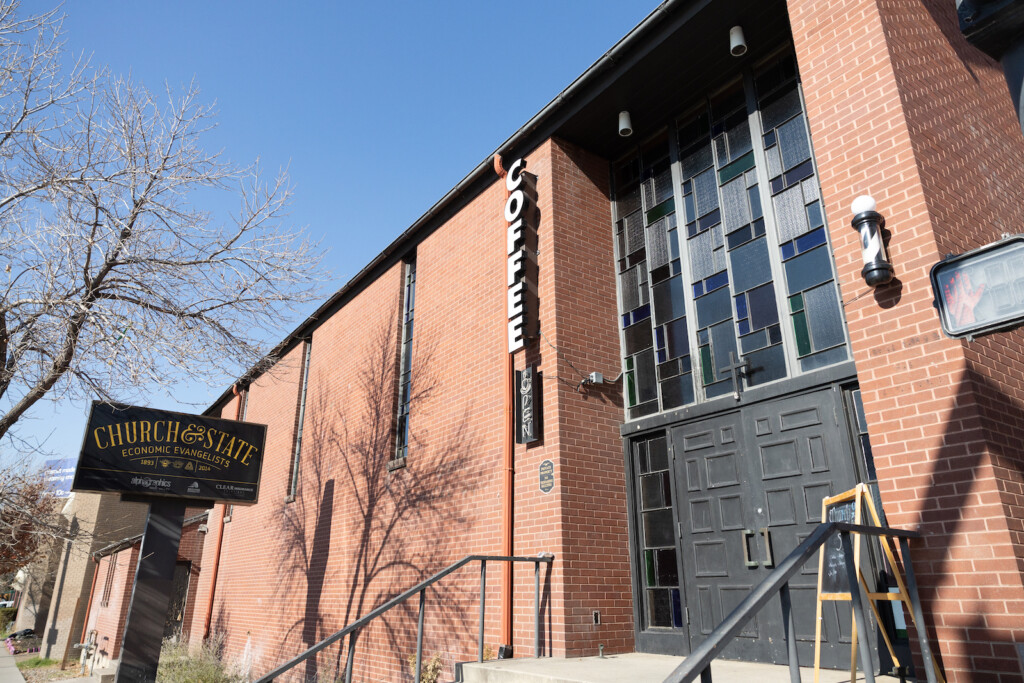Shaunell Runsted loves her job.
She is the lead housing and benefits specialist at Volunteers of America Utah, which employs over 300 people, and where she’s worked for the past 10 years helping Salt Lake City’s homeless.
But there’s something she doesn’t love, and it’s happening more often.
Last week, during one of her shifts, she said a man who was homeless asked for help. She recalled him saying, “I don’t think I can do another winter.” Runsted recommended some resources nearby and told him she could add him to the waitlist — but it’s 40 people long. Another waitlist for people wanting housing following substance abuse treatment is 30 people long.
“We just don’t have enough staff to take on new clients,” she said. “It can feel draining because it’s hard to watch people lose hope. It doesn’t feel good.”
A problem decades in the making
In November, Utah ranked No. 1 in the nation for the state with the lowest unemployment rate, which was 2.2%, according to the U.S. Bureau of Labor Statistics. While that’s generally seen as a positive sign for the economy and good news for job seekers, it also creates problems. Employers everywhere, across nearly all industries, are confronting hiring challenges.
Mark Knold, chief economist at the Department of Workforce Services, isn’t surprised by the job market. He points to the baby boomer generation that’s steadily aging out of the workforce.
“This labor shortage has been 60 to 70 years in the making,” he said. “You have an economy that’s been stretched to its maximum size, and you don’t have enough people to backfill it.”
These sorts of changes usually happen slowly, he said, but the pandemic took “the underlying trends and slammed them right to the surface.” While a recession or economic slowdown might ease the hiring strain, it will be temporary. “When the economy goes back to ‘normal,’” Knold said, “normal is labor shortages.”

Building a culture of support
Janida Emerson is the CEO of Fourth Street Clinic, which provides medical care to homeless adults and children in Salt Lake City. She is currently looking to fill 16 positions, or about 20% of her staff.
“We always are going to prioritize patient care,” said Emerson. “The real shuffle comes out on the back end. Some of those less urgent admin tasks start to back up.”
The nursing director floats to the floor more often because they are short on medical assistants. The front desk supervisor spends more time in the waiting room with patients because they’re short a waiting room ambassador. Others have stepped up to cover case management. An EMT position has been vacant for more than six months.
Fourth Street Clinic wants to grow in order to serve more people, Emerson said. But right now, that plan is hampered by a lack of qualified job applicants.
“Frontline triage positions are always really hard to recruit for.”
Aside from hiring, Emerson has spent a lot of time thinking about how to retain staff.
“We have had to be really creative thinking about how to continue to work with our employees so that they want to stay here, because the job market is so competitive right now.”
It’s why earlier this year she launched an emergency assistance fund for employees experiencing an unexpected expense, such as a medical, car or home maintenance bill. Employees can access up to $1,000 once per year and they don’t have to pay it back.
Fourth Street Clinic has done other things, such as upping the match for employee health savings accounts and covering 100% of employee health insurance. In 2023, Emerson said they will launch a tuition assistance program.
“We have put a lot of time and energy into thinking about how to build a culture where people feel supported.”
For the first time, the strategic plan for 2022 includes an initiative related to recruiting and retaining staff, something they hadn’t focused on before. It’s given her latitude to think about, “What else can we do to show people that we value them?”
Emerson is optimistic that these initiatives will pay off. “I think as you develop a reputation in the community for being an organization where people feel included, where they have a voice and that voice is heard and they’re part of a team and community, not just a cog in a wheel, you will start to attract more people.”
A positive turn
Trevor Hudspeth, a recruiter at Volunteers of America Utah, is in charge of filling 45 job vacancies. Before the pandemic, he managed between six and 15.
The vacancies, he said, are the result of not only staff turnover but also growth within the organization. It’s led him to shift some hiring practices. For example, he decided against using automated resume parsing software out of concern that it would pass over viable candidates.
Staff typically work in one program, he said, but over the past two years, many worked across programs and also overtime.
Runsted was one of them. When the pandemic left the organization severely short-staffed, Runsted paused her job in case management to do “anything to keep the facility going,” including serving meals and managing the front desk.
“It was very important. You understood that if we don’t stay here and do this, then no one’s going to be here for people who need it. Where are they gonna go when they have nowhere to go?”
Even when case management resumed, she covered shifts at the women’s shelter in the evenings. Some weeks, she clocked 100 hours.
This year, as did other employees, she got a pay raise, a “thank you” bonus and Amazon gift cards when she covered extra shifts.
“I feel like [Volunteers of America Utah] always really cares about you,” she said. But for Runsted, the work is more than just a job.
“People are having the hardest times in their lives, and they’re allowing you to be a part of it in some way. They’re trusting you with their vulnerabilities,” she said. “It feels very powerful. I’m just honored.”
Recently, she looked at the sign-up sheet for the swing shift and was pleasantly surprised. Not only had staffing for that shift been upped from seven to 10, but nearly all the slots were filled.
“I was like, this is amazing!” Runsted said. “I definitely think it’s taking a positive turn.”






